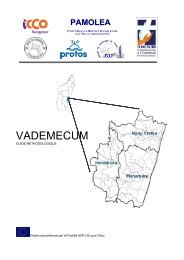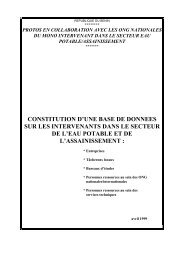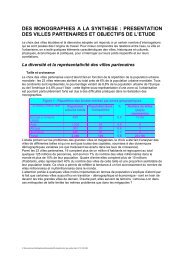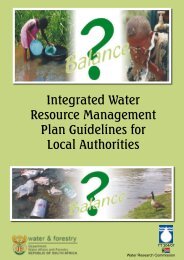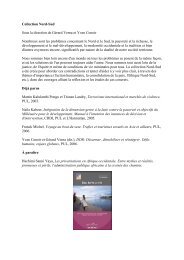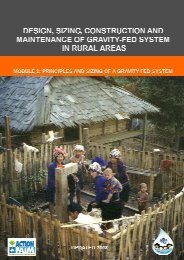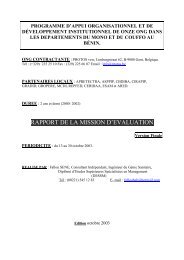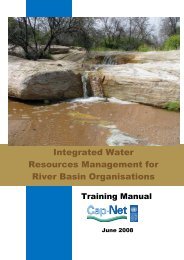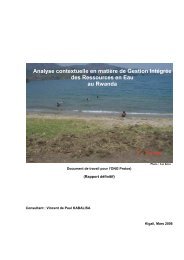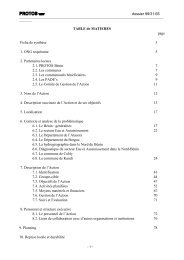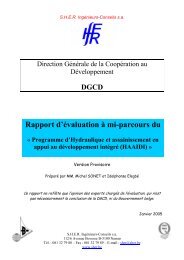table of contents preamble 1. summary - ACT - Advanced ...
table of contents preamble 1. summary - ACT - Advanced ...
table of contents preamble 1. summary - ACT - Advanced ...
Create successful ePaper yourself
Turn your PDF publications into a flip-book with our unique Google optimized e-Paper software.
- On the health care level there is probably an important impact which can still be enhanced<br />
by improving the spring protection techniques and by paying more attention to the<br />
protection <strong>of</strong> the direct catchment area <strong>of</strong> the spring or the borehole. Water analyses have<br />
shown that the springs and boreholes following the new criteria deliver a reasonable water<br />
quality.<br />
- Also the hygiene and sanitation component may have an important impact on health.<br />
However a quantitative monitoring system has not been developed for this.<br />
- On the level <strong>of</strong> community building, the project, thanks to its demand driven approach at<br />
the implementation <strong>of</strong> the water point, has certainly contributed to the growing trust <strong>of</strong> the<br />
population in their own capacities. On the other hand the committees and the communities<br />
have to be more strengthened in order to enable them to effectively take up this<br />
responsibility in the long term.<br />
- Women take up important roles in many water committees, and the attention and the value<br />
the project attributes to typically female tasks, such as fetching water and hygiene,<br />
valorises her more in the community.<br />
Viability<br />
- Technically the water points are considered viable, except for the ten committees who<br />
received an Afridev or Tara pump (for which no spare parts can be found locally). In the<br />
other places the technical knowledge, tools and spare parts are available, partly at the level<br />
<strong>of</strong> the community itself, partly at the level <strong>of</strong> the county or the district.<br />
- On the organisational level little problems are to be expected with the committees<br />
managing the protected springs. For the committees with a pump the management is much<br />
more complex because here money has to be saved for maintenance and replacement <strong>of</strong><br />
the pump. This suggests better skills in financial management, other communication<br />
techniques with the users, more negotiation capacities with regard to external service<br />
providers (technicians, supplier <strong>of</strong> parts…), etc. Because no clear plan for assisting these<br />
committees exists, their viability is not ensured today.<br />
- Financially the protected springs pose no problem on the condition that the works have<br />
been well executed. Maintenance here is more a case <strong>of</strong> motivation and labour and not <strong>of</strong><br />
available finances. For the wells with the hand pumps there is at present no committee that<br />
can follow the depreciation <strong>of</strong> the pump. In theory 200 shilling per month and per family<br />
are asked, but most committees possess only 5 to 30.000 shilling after one to one and a<br />
half-year working. Financial problems are to be expected here after 3 to 4 years.<br />
8.2. RECOMMENDATIONS<br />
8.2.<strong>1.</strong> Recommendations for the project staff<br />
♦ Further improve the spring protection technology : captate the spring eyes still deeper than<br />
today and protect a bigger part <strong>of</strong> the direct catchment area. An exchange visit to other<br />
organisations in the region using this “excavation technology” is recommended so that the<br />
CMWS staff can see with their own eyes how the job can be done and to what results it<br />
leads.<br />
40




